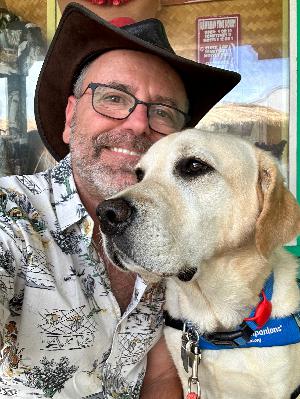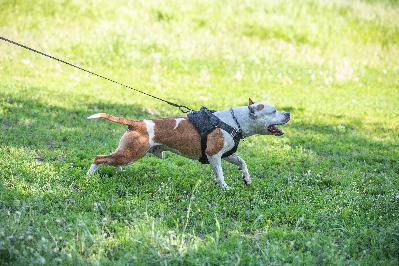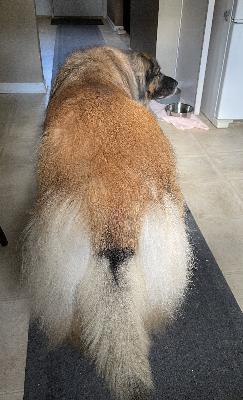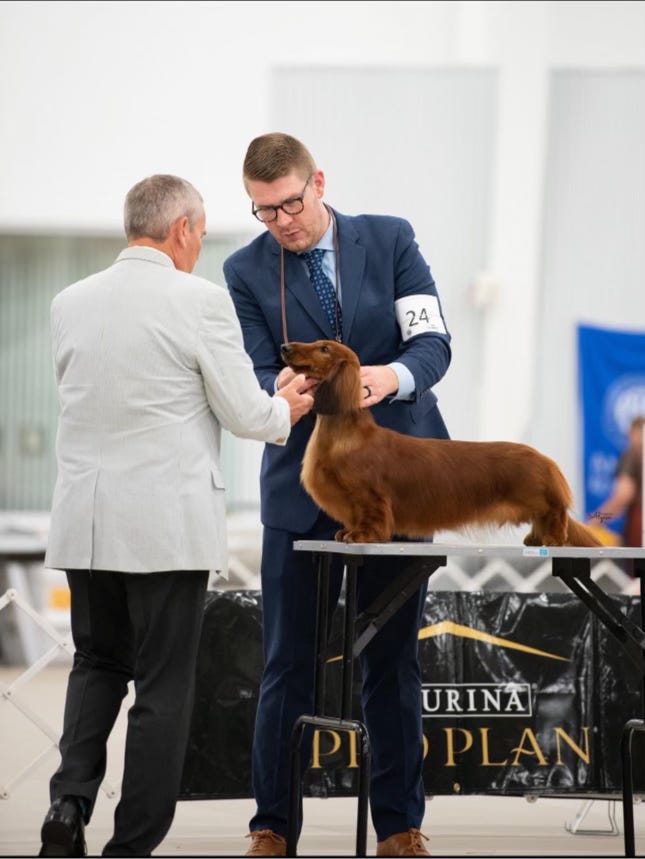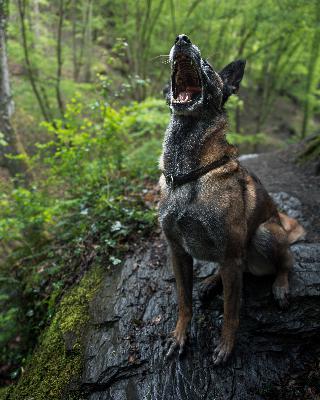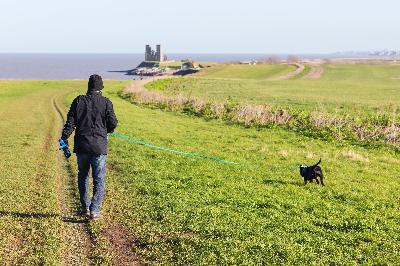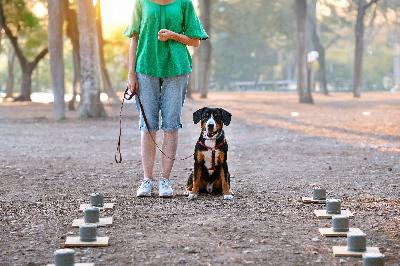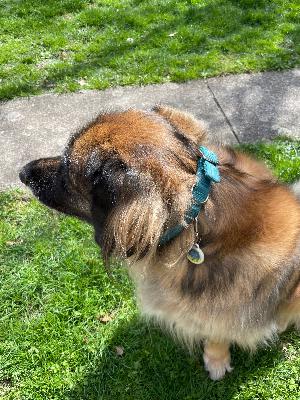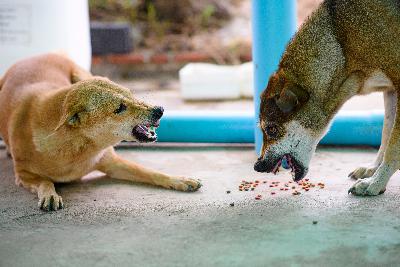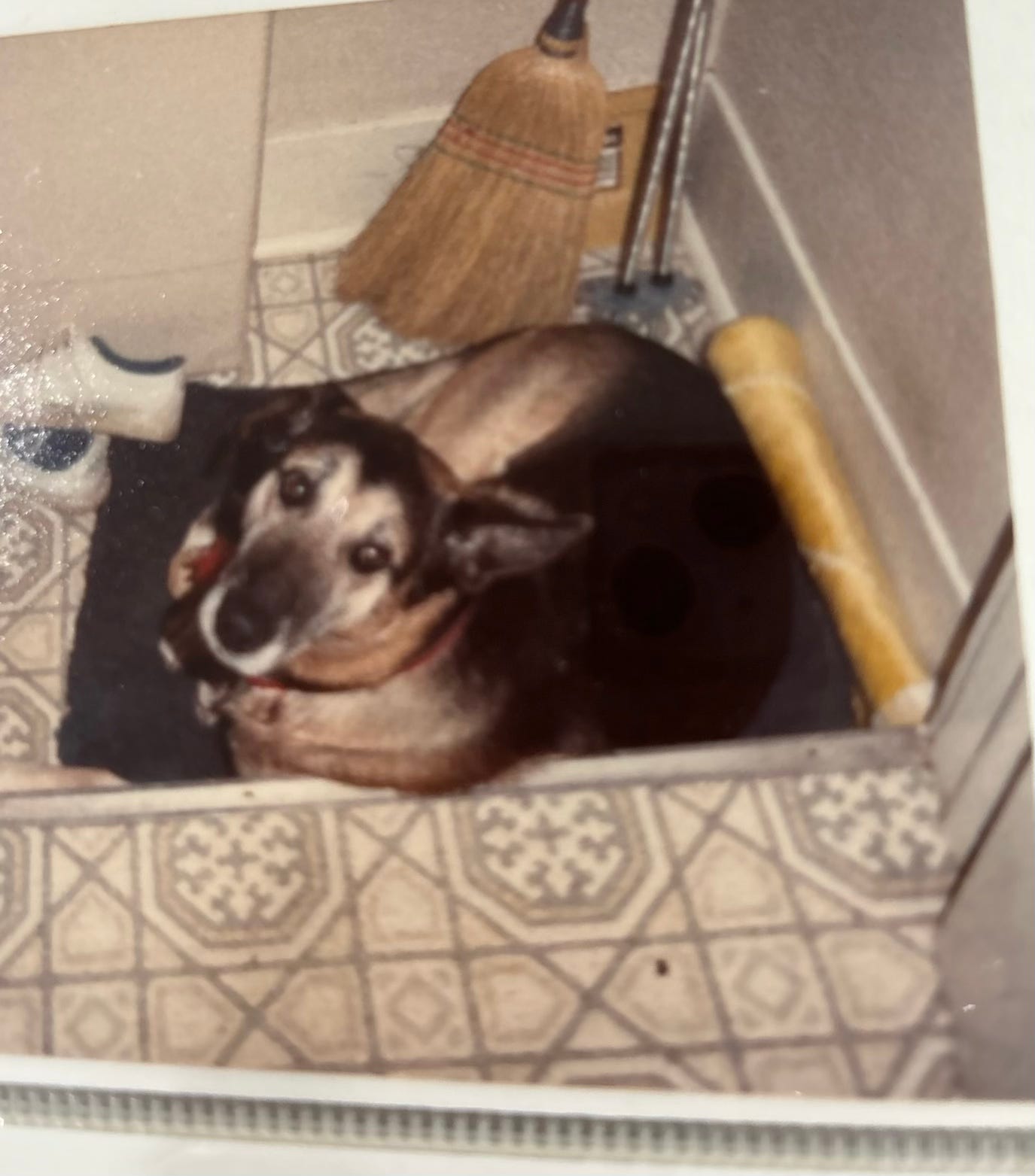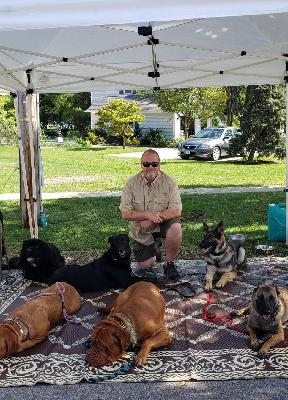Meet Koogle, Jim Turner's Service Dog
Description
Canine Companions is one of the premier service dog organizations in the United States. They provide dogs to people with disabilities free of charge. One of the clients who applied for a Canine Companions service dog is Jim Turner. Jim has a hearing dog named Koogle, who helps him navigate his daily life with confidence and independence. I had the privilege of talking to Jim with Koogle by his side, and saw first hand how Koogle assists Jim as his link to the world of sound.
Jim was diagnosed with bilateral neurosensory hearing loss during a company physical exam when he was in his forties. His wife, Kathleen, thought he had selective hearing and was sometimes ignoring her. It is a hereditary condition which worsens over time. Since then, he has been wearing hearing aids. Jim’s hearing challenges are defined by the limitations of not being able to hear the upper half of the frequency range that humans normally hear. Smoke detectors, doorbells, microwave alarms are all very challenging for Jim because even his hearing aids do not pick up that frequency. Also, when Jim is in a crowd of people, it is difficult to hear, especially when his name is being called amongst all that background noise.
Jim and Kathleen were familiar with Canine Companions because they were already puppy raisers for the organization. Volunteers like Jim and his wife, agree to raise the puppies provided to them by selected breeders from 8 weeks to 16-18 months old until they go on to professional training. (Please refer to my previous post with Staicey Sholtz dated 8/5/25 for more details about puppy raisers).
Jim was being encouraged by his close friends in the Canine Companions community to get a service dog. He didn’t feel that his hearing loss was that bad to warrant one. He wanted the service dogs to be reserved for people who were deaf. An event in his life changed his mind. One day, his wife was working in the kitchen and hurt herself. She was bleeding and calling Jim for help. Jim was only 10 feet away in another room and had no clue he was being called. He didn’t hear her pleas for help. That day he applied for a service dog.
Jim filled out an application online at Canine Companions’ website: canine.org. Applicants are prompted to describe their disability and how they could benefit from a service dog. The organization then reaches out to them for an initial interview. There is a space to write about your lifestyle - what your interests are, if you are an active or sedentary person. In Jim’s case, he had to provide a medical recommendation from his audiologist about hearing limitations. Canine Companions wants to ensure that the request is not only warranted, but also to match up the right dog with each applicant. This entire process can take up to two years.
Jim is a retired geologist. He had an illustrious career in the oil and gas industry and was part of a team who located oil and gas under ground. The first day of Jim’s retirement, at age 63, was the day he started his team training with Koogle. It was meant to be!
Part of the process of getting a service dog from Canine Companions is to go to one of their training facilities to be matched up with your personal service dog. At the time, Jim and Kathleen were living in Houston, Texas. The closest training facility was located in Oceanside, California. This is where he completed his two week team training, referred to as “rotations”. There were 7 applicants and 8 dogs. All of the applicants practiced handling each one of the dogs. The professional trainers who spend 6 months with these dogs make their observations and match up the best dog for each applicant. The “extra” dog remains at the training facility and is the first one in the next rotation to be matched up with the next group of applicants. After several days, Jim was matched with Koogle. Jim said it was like magic how accurately the teams were put together so perfectly.
Koogle is a six year old Labrador Retriever Cross. His mother is 50% Lab/50% Golden Retriever and his father is 100% Lab. Canine Companions select breeders who must meet certain standards. Koogle’s breeder was the caretaker of Koogle’s mother and had the privilege of naming one of the puppies in the litter. Canine Companions have restrictions for naming the puppies so that the names are appropriate and not repetitive. Koogle’s breeder/caretaker’s maiden name was Koogle. What a great way to honor her late father.
During Jim’s two week stay at the training facility, he learned many cues that were taught to Koogle. The trainers tailored certain cues according to Jim’s hearing loss needs. He learned protocols for socializing Koogle such as making sure Koogle wears his Canine Companions vest and what he should do when approached by people who want to greet Koogle. The first six months, Jim was to be the only person to give Koogle food. He was instructed to notify close friends and relatives about how important the first six months were and to abide by Jim’s rules so as to not disrupt any training Koogle had received up to this point. Canine Companions wants to assure that the bonding between their client and the dog remains intact.
The Americans With Disabilities Act does not require any labeling or vests for service dogs. Canine Companions require their dogs to wear a vest which you will see in some of the pictures below. Wearing a vest helps Jim notify the public that Koogle is a service dog. He found it useful to have “Please Ask To Pet” sewn on to it. Like most dogs, Koogle loves people and would love to greet everybody he meets. However, every time he says hello to people, he is no longer working for Jim during that interaction. It is out of respect for the handler of any dog, let alone a service dog, that they be asked first to greet their dog.
Koogle was trained to perform many different tasks to assist Jim in his everyday life. When he hears an alarm, a doorbell, or Jim’s name being called, he is to find Jim, nudge him with his nose, Jim tells him, “Good, Koogle what?”and Koogle takes him to where the sound is. However, if it is a smoke alarm, Koogle will still nudge Jim, but instead of taking him to the noise, he lays down. So, whenever Jim sees Koogle lay down after being nudged, he knows to get out of the building they are in.
Koogle was also trained to do standard service dog tasks such as turning on and off lights and opening and closing drawers. He can even jump up and push the accessibility button to open doors in public places.
One intangible benefit that Jim did not expect to experience with a hearing dog was the acceptance of having a hearing disability. For example, Koogle gives Jim the confidence he needs when trying to have a conversation with someone in a crowded environment. Background noise impedes the ability to hear well. He is more apt to tell a stranger to repeat themselves because he has a hearing disability when Koogle is by his side.
Jim’s wife was very excited to have a hearing dog in the house so she didn’t feel she always had to be Jim’s ears. Koogle relieves her of knowing that when she is not with Jim, the dog can alert him, if needed. Even something as simple as dropping his keys and not hearing that sound, Koogle can stop Jim by nudging him and taking him to where he heard the keys drop. This gives his wife a lot of reassurance that he will manage well when going out of the house.
Jim believes there are two aspects to being a service dog. One is the ability to perform the tasks they were trained to do as demonstrated in the video above. That’s the easy part! The other part is that the dogs need to be calm and manageable in public. This is attributed to the puppy raisers who properly socialize them while they are in their care. The other part of being calm is the temperament of the dog. This speaks to the breeding of these dogs. For example, if a dog is too hyper or has a high prey drive, Canine Companions breeders will not breed that dog.
In both podcast videos of Staicey Sholtz and Jim Turner, their dogs remained laying down until they were called to do a task. Although the dogs look like they are sleeping, they always have an ear out for noises that change in their environment or that could possibly harm them. This auditory instinct allows them to differentiate between familiar voices and changes in the intensity of those voices which will wake them up in case they need to act on them. Their dogs are trained to be ready for action as soon as they hear their name being called.
Jim meets people out in public who either have service dogs they paid a lot of money for, or who tried to train their own dog only to find out that it didn’t work out for numerous reasons. Sadly, there is plenty of fraud in the service dog field. Organizations will claim they can train your dog to become a service dog, but are not qualified to do so. They also do not have the standards required to be an effective service dog. Canine Companions is a well known and trusted service dog organization yielding qualified dogs and plenty of satisfied clients.
There is so much that goes into training service dogs above and beyond just training the standard tasks. If a dog is fearful or even mildly aggressive with certain triggers, this can present problems. Professional trainers can work on these issues with the dogs, but it can slow down the timeline required to place these dogs with applicants. My dog, Ebi, could make a great service dog, but she is too big and too hairy! Also, I have come across some people who are afraid to meet her because of her size, or they are cautious because they don’t know what breed she is.
Labs are a great size and can fit under tables at restaurants or places of business. They do

